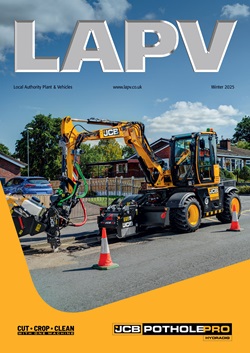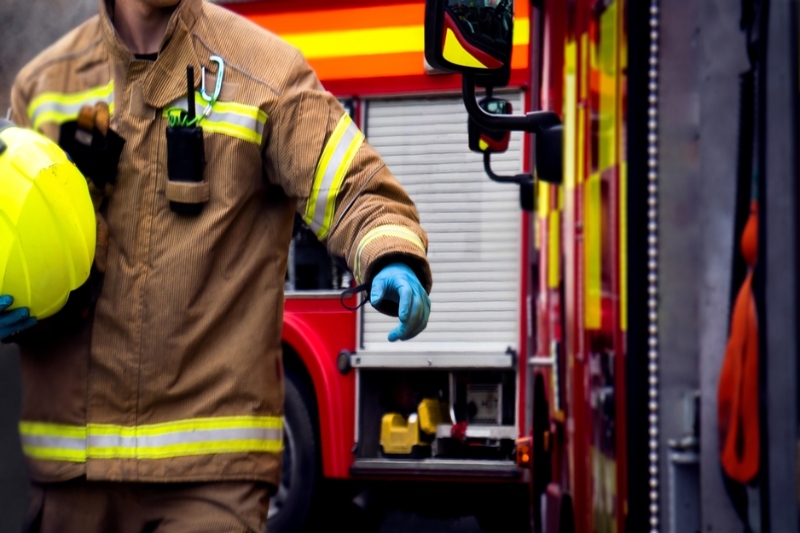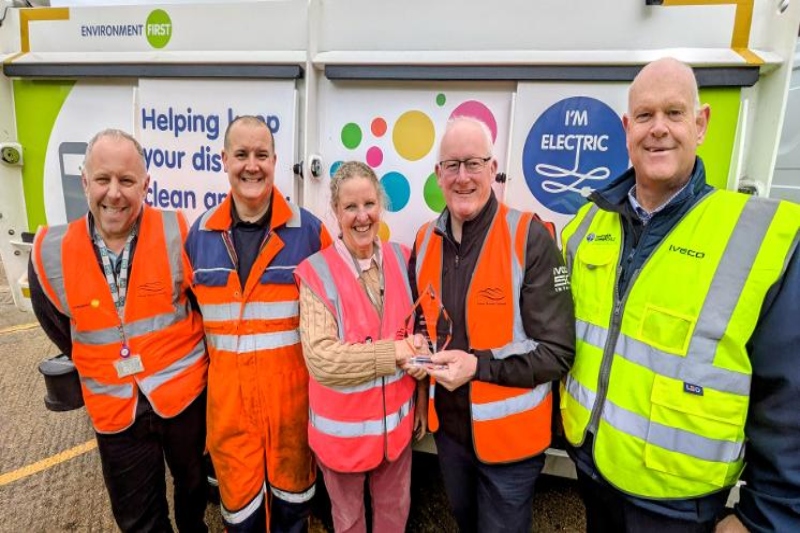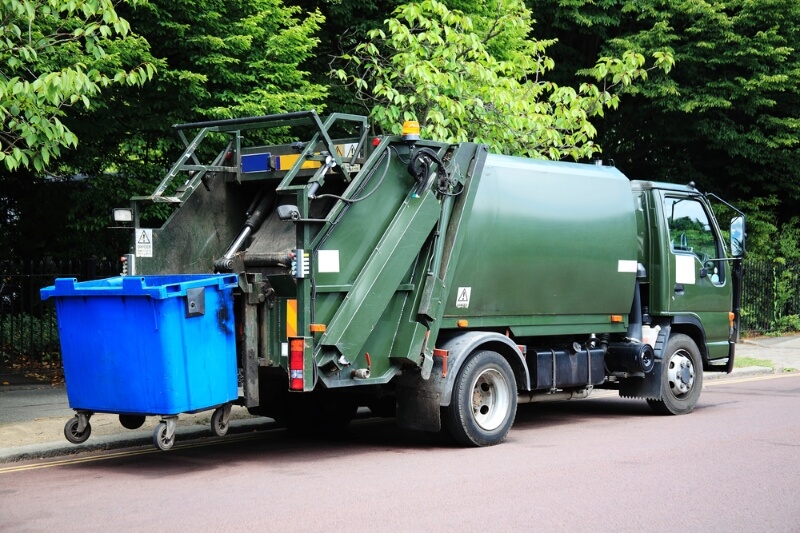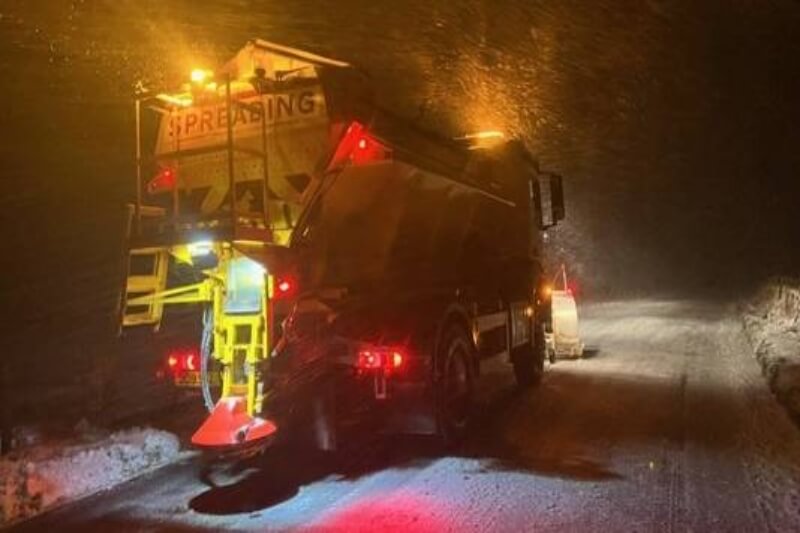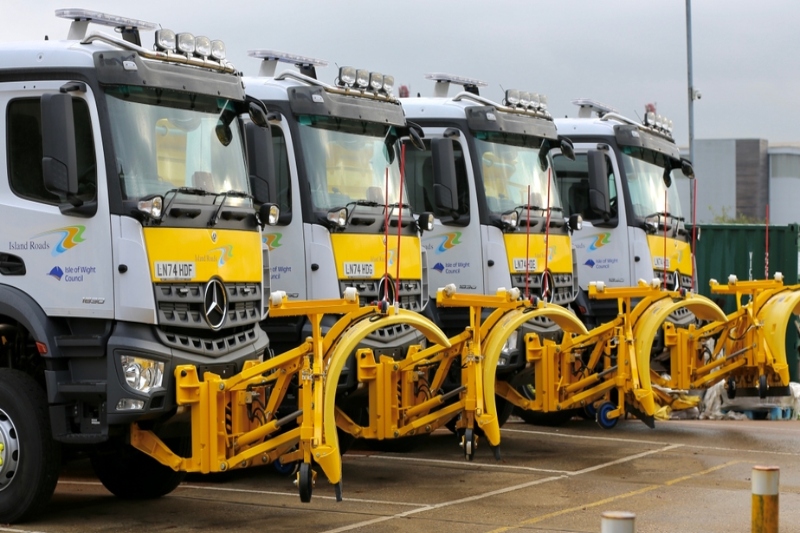Aebi Schmidt's Swingo compact sweeper is celebrating its 40th birthday. Since first being introduced back in the 1970s, the machine has won many accolades and Swingos are constantly in action all over the world on city streets, airports and military bases. LAPV talked to Aebi Schmidt's new MD Richard Bryant and international key account manager Mike Moore about the Swingo's development.
'The high specification specialist sweepers that clean our roads today, came about as a direct result of muddy tractor wheels. Agricultural debris on roads in the Black Forest during the 1950s became a significant issue and so the first mechanised sweepers were born ' the very first of which was mounted on a Vespa,' said Mike Moore, key account manager for Aebi Schmidt.
The increase in urbanised areas in the UK created a real demand for these prototype vehicles which quickly began to evolve. During late1970s Aebi Schmidt's compact sweepers picked up two of the country's highest accolades for business success ' The Queen's award for Industry and The Queen's Award for Export.
'These official endorsements recognised the approach taken by Aebi Schmidt in its continuous redesign, redevelopment and refinement as well as the wide distribution of our fleet. Schmidt understands that customer feedback is key to ensuring our vehicles are market leaders; it is this faith in our customers that drives development. No other vehicle manufacturing company within this field has had the confidence to start with a blank sheet of paper and totally redesign their products like Schmidt has,' said Moore.
To date, a total of 5,500 Swingo machines have been built. And each year 500 more vehicles are rolling off the production lines ready to deal with rubbish all over the globe. Swingo sweepers are constantly in action on city streets, in airports and in military bases worldwide.
In the UK alone, there will be approximately 500 Swingos operating at any one time. The vehicles are often clocking up to 40 hours' working time per week, cleaning kilometre after kilometre of paths, pedestrianised zones, streets, squares and runways.
The latest model, the Swingo 200+, offers a choice of two different types of engine, each featuring the latest engine technology. It can either operate with a 55kW (75hp) Euromot 3B engine equipped with a closed diesel-particle filter system or with the Euro VI diesel engine.
'This engine is powerful and quiet (62 kW / 84 PS). It has four cylinders and produces low-level emissions in accordance with the Euro VI emission standard. The Euro VI engine, which includes a urea injector, is integrated into the chassis which allows the Swingo to maintain excellent mobility and manoeuvrability. The 200+ is also equipped with a noise reduction kit allowing it to work below the limit of 99dB, so it can quietly clean streets around the clock ' even in residential areas,' said Moore.
'Each and every part of these vehicles has been assessed and upgraded over time. An example of this is the original steel dirt cover on the suction port. This part has now become redundant, superseded in a redesign which integrated it into a suction unit. This scrutiny of each component results in redesign and upgrading. In this particular instance, the removal of a part cuts down maintenance and reduces spare part costs.
'Much of the fleet's development work takes place in the science lab. For example, in order to produce a better cleaning performance with increased suction, the optimum shape of the Swingo's suction port was scrutinised in the laboratory using flow visualisation analyses,' he added.
Once this exploratory work was complete, a mini-series was produced and tested on various machines on an international scale. The result was an improved suction port, producing a better cleaning performance using the same amount of air in the suction fan.
'This constant cycle of machine upgrading is what makes the Swingo outstanding in its field,' said Richard Bryant, the newly appointed managing director for the company.
'We invest heavily in the training of our workforce. Individuals are comprehensively trained on products, latest technology, leadership and management skills, equipping each member of staff with the bigger picture and enabling them to appreciate their particular role and how it fits in to the overall company operation.
'This allows an informed and engaged workforce to work collaboratively with its customers. For example, our sales managers understand the importance of asking pertinent questions such as: 'What do you like about our vehicles?' and 'What can we improve upon?' and they have the confidence to do so.'
The UK local authority fleet manager is very clear about what is required from a sweeper: maximum cleaning performance, minimum dust creation and the biggest hopper in the smallest chassis.
'Our specialist vehicle designers and engineers are well versed in solving these conundrums. For example, the cleaning issue has been overcome by the introduction of a pressurised water recirculation system which binds the dust and debris in the suction well. This ensures only clean and low-dust air is released back into the environment which has helped the 200+ reach the PM10 standards of fine dust certification,' said Bryant.
Customer feedback shapes the design of the machines according to Moore.
'Compact sweepers are getting smaller. The 200+ measures just over 1m wide but contains a large 2.0m³ hopper. Driver feedback suggests these smaller models need to be highly manœuvrable and able to reach and clean previously inaccessible areas.
'Aebi Schmidt introduced a hydro-pneumatic chassis which enables the vehicles to sweep multi-storey and underground car parks which they weren't previously were not capable of.
'Vehicle efficiency, reliability, performance and improved driver safety are key focuses for our sweeping machines.
'Road safety and visibility are also at the core of this design focus. With some of our vehicles now including an air-conditioning system as standard, the development of optimised air circulation systems which clears fogged up windows fast is crucial to helping visibility and safety.'
Moore added that comfort and well-being of drivers is, of course, at the heart of good performance: 'This is why we have added ergonomic improvements within the cab, which have resulted in a safer and less exhausting environment for them and we have integrated lumbar-supporting seats as standard in the 200+.'
The focus on avoiding driver exhaustion has resulted in the 200+ having repositioned joysticks which control the brush system and the introduction of ergonomic control panels which make it easier for the driver to leave the vehicle without moving arm rests. Even exhaustion-free footwork has now been implemented and the vehicles are now fitted with an improved accelerator and brake pedal arrangement. User-friendly switches and large, multifunctional displays also help provide clarity for the driver.
'In addition to an upgrade of both driver and passenger seats, the entire driver experience has improved over the years. Swingo cabs have been totally redesigned and now have the option of soundproofing, an adjustable steering column, a multi-functional steering wheel and improved interior lighting systems,' said Moore.
'It is this mix of expertise, attention to detail and dedicated customer support that really deserves the big birthday celebrations,' he concluded.


